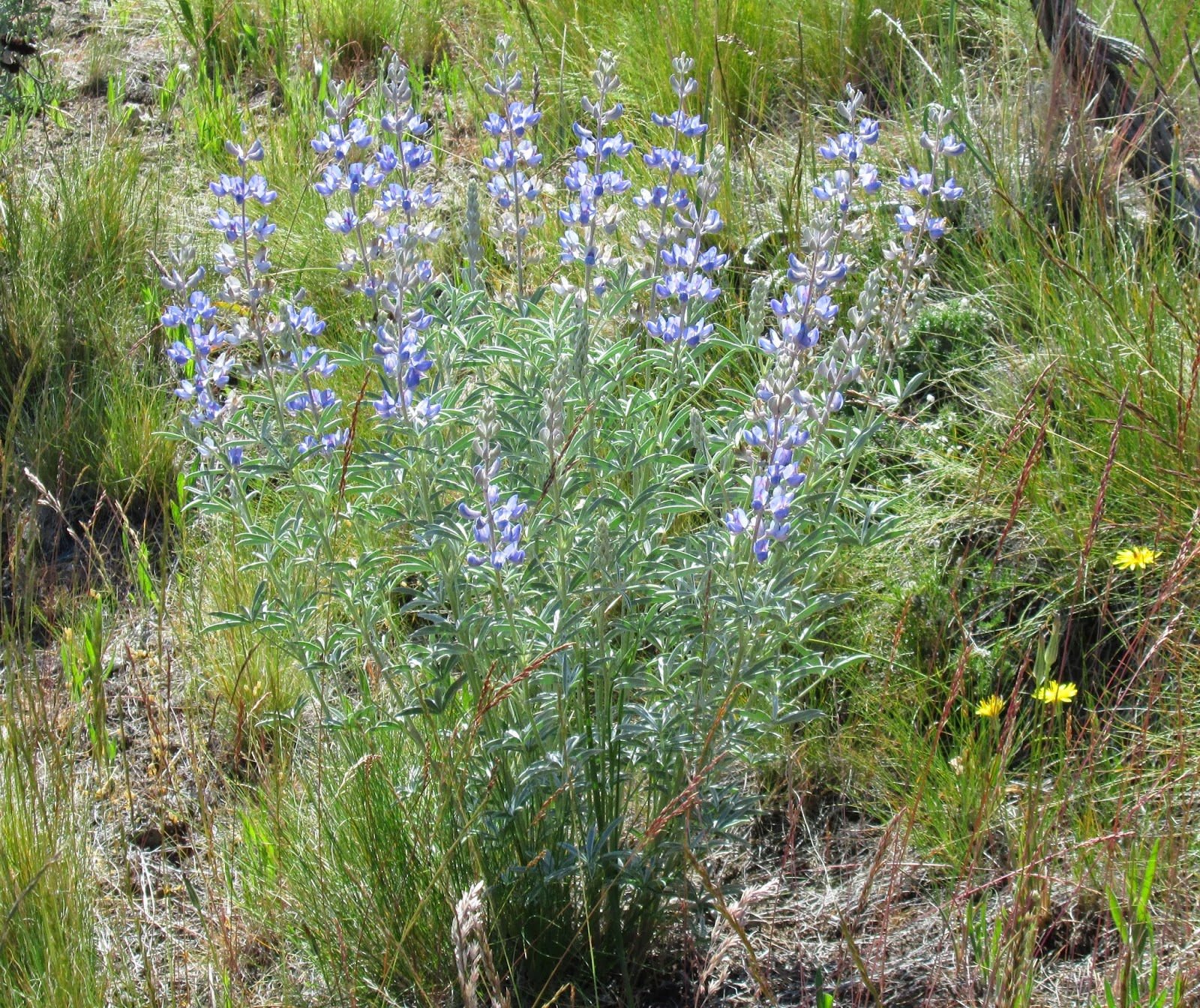This is Large-flowered collomia. It's of the phlox family. The flowers are usually a pale salmon color. they are an annual that can grow up to three feet tall.
This I believe to be Common Larkspur. This grows in many regions and the flowers can be anywhere from white to purple.
This sunshiny yellow flower is microseris. It resembles the common dandelion. the flowering heads close early in the day, especially during hot weather.
I'm not positive about this one, but it has several of the same characteristics of the Oregon sunshine. It has bright golden-yellow flowers and whitish-woolly leaves. Grows low to the ground and thrives in many habitats but likes dry sandy plains and fine talus slopes.
I loved finding this flower as a child. Indian paintbrush. Or in this case, Desert paint brush.
This is a Plains daisy. They like to grow in dry, thin rocky or gravelly soils.
The Prairie lupine can be find in nearly all geographic locations. They adapt to the area in which they are growing.
The blue of this Blue penstemon is the first thing that caught my eye. This particular color is most abundant in the sandy sage brush plains of eastern Idaho. We aren't' that far from eastern Idaho. ;)
The pale yellow and long graceful stalks of this plant reminded me of a dancer. However, the name is Thread-stalk locoweed. Locoweed can be a threat to livestock. Certain species can accumulate large amounts of selenium and when the animal eats the plant it gets selenium poisoning. These plants also have an alkaloid substance called "locine" which if eaten in large amounts can also kill an animal. While most livestock don't eat the plant unless they are low on food, some can become "addicted" to the plant. If eaten in small amounts it can cause lack of coordination and muscular control and violent, unpredictable behavior when aroused. Animals rarely recover after having loco poisoning.
This delicate, pretty flower is Yampah. It was named by the plains Indians who used the plant's starchy bulbs to eat. The can be eaten fresh, cooked, dried, or ground into flour for baking. It has a carrot flavor and is one of the most nourishing wild plants. It flowers through out the summer months.
I used the book, Sagebrush Country- A Wildflower Sanctuary by Ronald J. Taylor to identify the flowers.











5 comments:
I've taken photos of all of those, but never knew the names... just the lupine.
Mary, one of the first things I did when we bought this property was buy a book on wildflowers and birds. I don't know the names until I look them up, but it's fun seeing so much diversity in this dry, sandy, volcanic soil.
beautiful photos. We had planned to head for Yellowstone this summer but to be honest we are more and more thinking it's not where we want to be and will instead circle around Oregon hitting spots we did not last summer. I do love Oregon and don't have to drive far to enjoy such diverse scenery. I hope there are still wildflowers come early July ;)
Rain, Enjoy your trip around Oregon!
I think it's what we'll end up doing. I have an Oregon historical I am starting into and although I've been all the places in the story, being there when writing is a plus for me.
The other thing is concern for being farther away is buying hay. /they say it'll be in short supply this year with so much being sent out of state. It's always a worry this time of year as we need at least 40 tons plus the grass on our place to get through winter.
Post a Comment